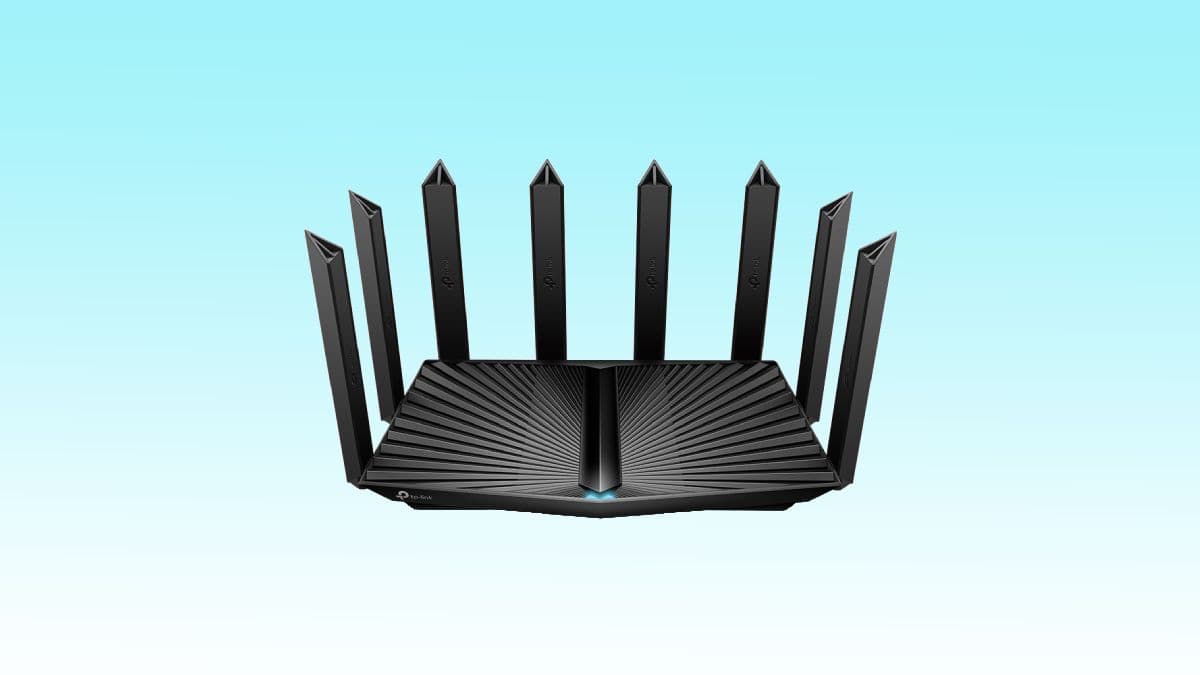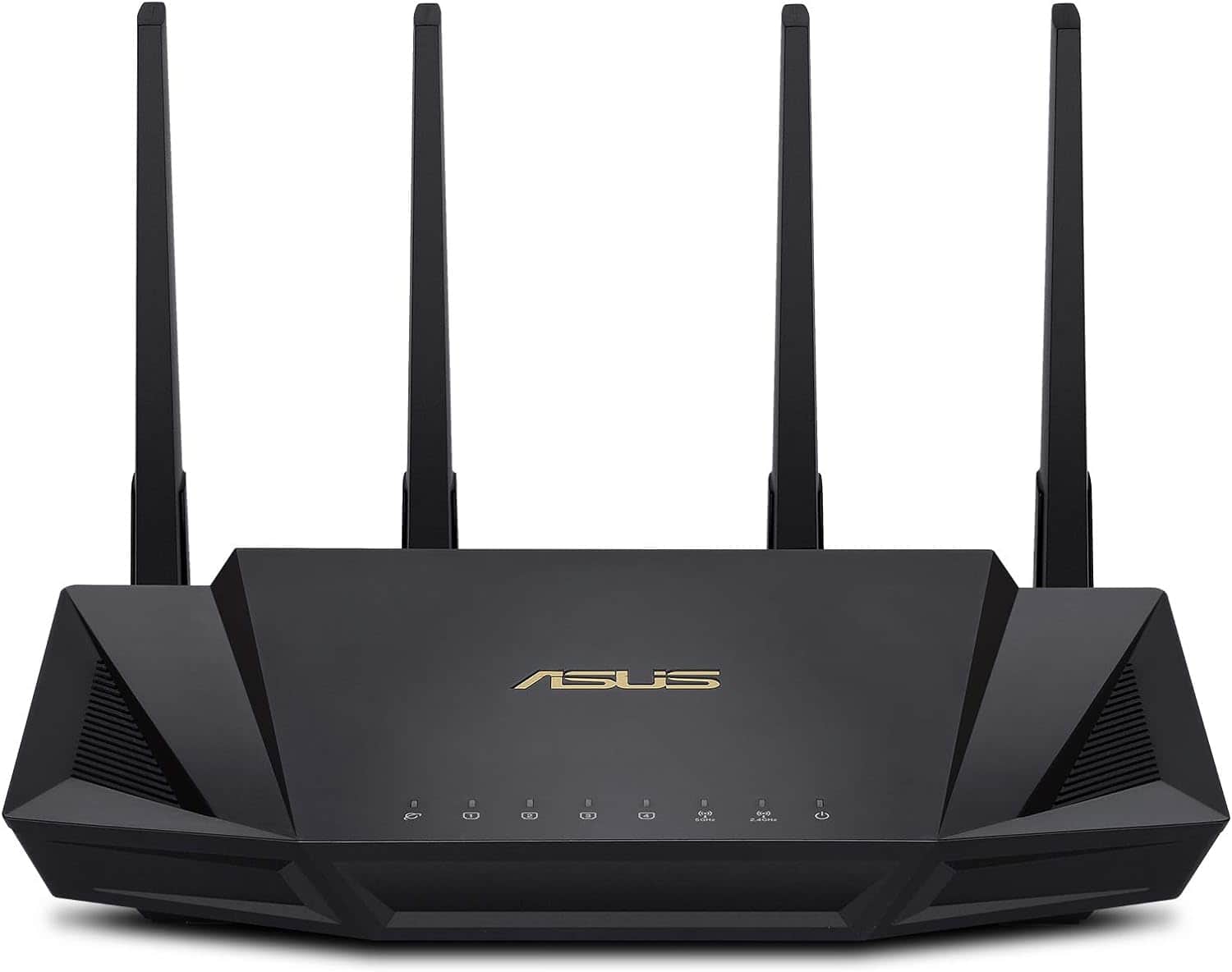Best Routers under $200 – our top picks

Table of Contents
A budget of $200 for a router is more than decent, and you can easily see yourself getting a WiFi 6-supported router in this range. Options such as Dual-Band or Tri-Band are available, and you can also get mesh systems in this price range, which are ideal for large homes and offices with multiple floors. Some of the best router mesh networks come with three to four extenders, but adding extra units can increase the price.
As the market is filled with routers, it can be difficult to choose the right one, so we've selected a few options we think are the best routers under 200 dollars. We’ve ensured that the performance meets expectations without breaking the bank.
Prime Day is finally here! Find all the biggest tech and PC deals below.
- Sapphire 11348-03-20G Pulse AMD Radeon™ RX 9070 XT Was $779 Now $739
- AMD Ryzen 7 7800X3D 8-Core, 16-Thread Desktop Processor Was $449 Now $341
- ASUS RTX™ 5060 OC Edition Graphics Card Was $379 Now $339
- LG 77-Inch Class OLED evo AI 4K C5 Series Smart TV Was $3,696 Now $2,796
- Intel® Core™ i7-14700K New Gaming Desktop Was $320.99 Now $274
- Lexar 2TB NM1090 w/HeatSink SSD PCIe Gen5x4 NVMe M.2 Was $281.97 Now $214.98
- Apple Watch Series 10 GPS + Cellular 42mm case Smartwatch Was $499.99 Now $379.99
- ASUS ROG Strix G16 (2025) 16" FHD, RTX 5060 gaming laptop Was $1,499.99 Now $1,274.99
- Apple iPad mini (A17 Pro): Apple Intelligence Was $499.99 Now $379.99
*Prices and savings subject to change. Click through to get the current prices.
Products at a glance
-
Best router under $200
TP-Link Archer AX80
- Standard: Wi-Fi 6
- Frequency bands: 2.4 Ghz, 5.0 Ghz
- Max speed: 2.5 Gbps
- LAN ports: 2.5 Gbps WAN/LAN
-
Best bandwidth router under $200
Netgear Nighthawk RAX43 WiFi 6
- Standard: WiFi 6
- Frequency band: 2.4 GHz, 5 GHz
- Max speed: 4.2 Gbps
- LAN ports: 4 x 1 Gbps
-
Best mesh router under $200
Linksys Hydra Pro 6 Mesh WiFi 6 Router (MR5500-AMZ)
- Standard: WiFi 6
- Frequency band: 2.4 GHz, 6 GHz
- Max speed: 5.4 Gbps
- LAN ports: 4 x 1 Gbps
-
Best gaming router under $200
ASUS RT-AX3000
- Standard: WiFi 6
- Frequency bands: 2.4 GHz, 5 GHz
- Max speed: 2.4 Gbps
- LAN ports: 4 x 1 Gbps
How we picked
During our research, we looked closely at the extent of a router's coverage and speed. We consider ease of use highly important in this price range, so set-up difficulty and user interface were important factors we looked at when deciding what the best routers under $200 were. At the time of selection, all of the products on this list were priced below $200.
Our top picks

- Standard: Wi-Fi 6
- Frequency bands: 2.4 Ghz, 5.0 Ghz
- Max speed: 2.5 Gbps
- LAN ports: 2.5 Gbps WAN/LAN
- Great coverage, and dual-band with WiFi 6 connectivity
- Sleek design with 8 antennas for optimum performance
- 2.5G Multi-Gigabit port
- Not recommended for slow internet connections
- Definitely more suited for homes that have really high internet consumption
If you want to get the best router under $200 that ticks all the boxes of a great router, we'd recommend the TP-Link Archer AX80.
The TP-Link Archer AX80 features WiFi 6, which is the sixth generation of WiFi. This one offers better speeds, better safety protocols, and less bandwidth congestion than what you get with WiFi 5. Since it is a dual-band router, the AX80 supports both 2.4GHz and 5GHz bands. The speeds are also extremely high, as it supports up to 1148Mbps on 2.4GHz and up to 4804Mbps on 5GHz.
The TP-Link Archer AX80 is a long-range router and is ideal for large homes or offices. You can also extend its range by using a OneMesh-supported Range Extender. When it comes to ISP compatibility, the router works with most internet service providers, including Starlink, Comcast, and Frontier.
TP-Link Archer AX80 comes with some additional features, like Parental Control, which allows you to restrict certain websites, and QoS, through which you can choose the device that should get the fastest connection.
PC Guide
For wired connectivity, the router comes with a 2.5G Multi-Gigabit port. These ports support speeds anywhere from 1 Gbps to 10 Gbps, so you can expect the router to provide a fast and stable connection. The router also has a standard Gigabit port next to it. There are also eight high-performance antennas, which should help with making the WiFi signal reach everywhere in the house or office.
TP-Link Archer AX80 also comes with some additional features, like Parental Control, which allows you to restrict certain websites, and QoS, through which you can choose the device that should get the fastest connection. Overall, the TP-Link Archer AX80 is one of the best routers that you can get for under 200 dollars.
- Standard: WiFi 6
- Frequency band: 2.4 GHz, 5 GHz
- Max speed: 4.2 Gbps
- LAN ports: 4 x 1 Gbps
- WiFi 6 with dual-band support
- Can connect to 25 devices simultaneously
- Easy setup process
- Doesn't have a 2.5 Gbps port, so max speeds might fluctuate under heavy load
- Some reports of connectivity issues
WiFi 6 might no longer be the latest generation of WiFi, but now that it’s been around for a while it’s become far more accessible. For this, we recommend the Nightwak RAX43 router from Netgear, which we think deserves to be one of the best WiFi 6 routers.
Just like our top pick, this one is also a long-range router, as it gives a coverage of up to 2,500 sqft. The router can handle up to 25 devices at the same time. As it is a dual-band router with support for both 2.4GHz and 5GHz networks and has a 1.5 GHz tri-core processor, it should deliver smooth performance even if multiple devices are connected to it simultaneously.
There are four Gigabit ports through which you can connect your PC, console, or other devices using an Ethernet cable. In addition, there's a USB 3.0 port. You can connect your printer or external hard drive through it to share files over the network.
As it is a dual-band router with support for both 2.4GHz and 5GHz networks and has a 1.5 GHz tri-core processor, it should deliver smooth performance even if multiple devices are connected to it simultaneously.
PC Guide
There's also a Nighthawk app which you can download on your mobile devices. It is available for both Android and iOS, and you can use it to access different features, such as Parental Control. Through it, you can block certain websites that you might think are inappropriate or are a threat to your privacy.
Overall, the Netgear Nighthawk RAX43 is the best WiFi 6 router you can get today. It has long range, high speeds, and support for up to 25 devices at the same time, making it worth every single penny.
- Standard: WiFi 6
- Frequency band: 2.4 GHz, 6 GHz
- Max speed: 5.4 Gbps
- LAN ports: 4 x 1 Gbps
- Supports WiFi speeds of higher than 5 Gbps, without the premium price tag
- Mesh WiFi system, so dead zones should be eliminated
- The app has a simple user interface to improve set up
- Can be difficult to configure router settings
- Basic bpackage can bne expensive for what you get
If you have a large home or office with multiple floors, you'll be better off with a mesh system instead of a regular router. For this, we recommend the Linksys Hydra Pro 6.
One of the main benefits of this router is its use of the new 6 GHz frequency band. Not only is a dual-band router far more reliable than a single-band one in the first place, but the new 6 GHz Wi-Fi spectrum is 1200 MHz wide – this is more than double the size of the 2.4 GHz and 5 GHz spectrums. Having access to these higher bandwidth limits can let you harness the true power and speed of WiFi 6 technology.
Moving on to coverage, this is where the Linksys Hydra Pro 6 being a mesh router shines. Using mesh networks usually eliminates dead spots, especially in larger homes and offices. According to Linksys, you should get coverage up to 2700 sq. ft.
You’re also benefitting from adjustable antennas and beamforming technology that enables up to 35 devices to connect to the WiFi throughout this space, putting it on par with some of the best routers for multiple devices. Plus, as this is a mesh system, it connects to other routers with Linksys Intelligent Mesh, meaning you should be able to extend your wifi coverage easily if you feel the need.
What’s good about mesh networks is the lack of dead spots, especially in larger homes and offices, and according to Linksys, you should get coverage up to 2700 sq. ft.
PC Guide
You can get a whole range of additional features by pairing your router with the Linksys companion app. This app lets you adjust settings, grant access to devices, set device prioritization, use parental controls, 2-step verification, and much more.
- Standard: WiFi 6
- Frequency bands: 2.4 GHz, 5 GHz
- Max speed: 2.4 Gbps
- LAN ports: 4 x 1 Gbps
- Advanced parental controls
- Compatible with AiMesh devices
- Excellent top speed
- No multi-gig port
- Antennas are not removable
Modern gaming is very demanding on an internet connection. It isn’t uncommon to have multiple devices in a household all needing high-speed access to download the larger files for a new game or engage in some Streaming on Twitch. For this, you need a fairly powerful router. We recommend the Asus RT-AX3000 to provide a level of performance without too much damage to your bank account.
This is a Dual-Band router, which supplies both 2.4GHz and 5GHz bands. This also allows users to separate lower-priority traffic such as IoTs or a guest network on to the lower band, and keep the higher band for high priority things such as video streaming or downloads. While it does not support the newer Wi-Fi 6E or Wi-Fi 7 standards, it should be enough for most households.
It comes equipped with 4 x 1 Gbps LAN ports, and 1 x 1 Gbps WAN port, along with a single USB-A 3.0 port to attach a NAS or network printer to. Official specs list the top speed at 2.4 Gbps.
If you are in a smaller house or apartment, this router can easily provide enough coverage. Even if you find you need to expand later on, this router is compatible with AiMesh devices, allowing for easy expansion by adding additional nodes.
The Asus RT-AX3000 is not the latest and greatest in router technology, but it provides speed and coverage for an affordable price that should be suitable for most home users.
How to pick the best router under $200
Finding the right router is tricky, as the market is filled with hundreds of them. Here are a few things you should look for in a router.
WiFi generation
Wi-Fi 7 is currently the latest generation of Wi-Fi, but that tech is new and costs a premium. Wi-Fi 6 is around 40% faster than Wi-Fi 5 and is probably adequate for most home users. Make sure to go for a dual-band or Tri-band router so that it supports both 2.4GHz and 5GHz connections. You can even find some tri-band routers under $200, which come with a single 2.4GHz band and two 5GHz bands.
Coverage
You need to pick a router that can distribute Wi-Fi signals evenly across your home or office. If you're getting a router for a small house or apartment, the range won't matter a lot. But for large homes or offices, we recommend getting a router that has a coverage of up to 2,500 sqft. It will be even better to invest in a mesh system, as they come with extenders that can help increase the range of the signals. In case you want something that offers a great range, check out our top picks for the best routers for WiFi range.
Features
Most routers under 200 USD come with additional features these days, including security features. Make sure that the router you're getting comes with an app that lets you access these features. For instance, the TP-Link Tether app lets you access Parental Controls, which can help with restricting certain websites. Other than that, the app allows users to manage everything about their router from anywhere.
Are routers under $200 good for gaming?
Most standard routers are more suitable for most online gaming, and many routers on this list perform this function particularly well. It all depends on the type of gaming you wish to take part in. However, if high-quality gaming is your priority, we recommend going that little bit further and investing in a gaming router.
Are routers under $200 worth it?
Spending up to $200 on a router is more than adequate for standard internet use, and more often than not, certain routers under $200 can be surprisingly good at more demanding tasks. Specifically in regard to bandwidth and gigabit internet speeds. Furthermore, routers designed for standard home and office use often feature clear user interfaces (online or through apps) that are designed to be easy to use.







